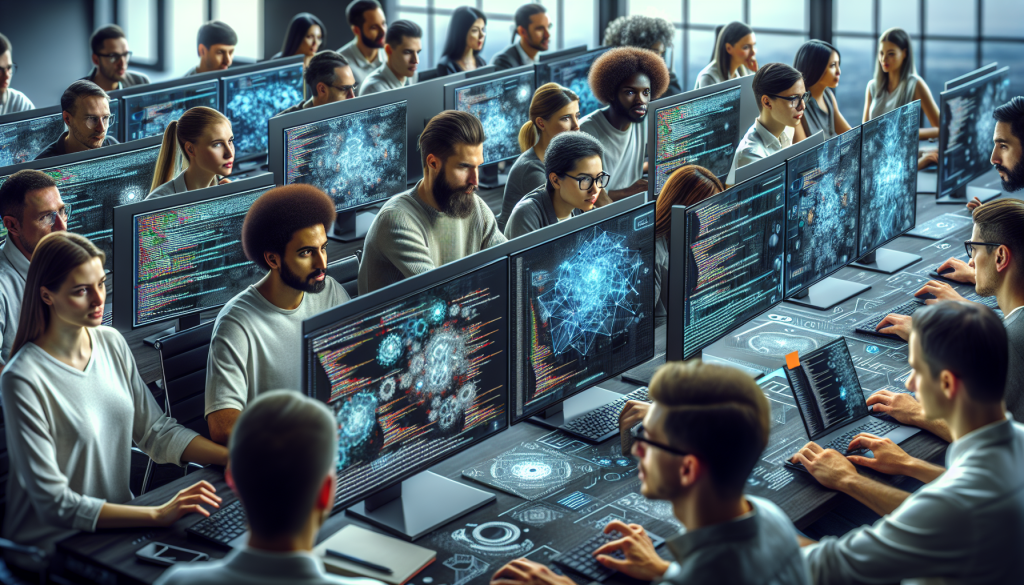
In the rapidly evolving world of technology, generative AI for developers is emerging as a transformative force in software development. As developers seek innovative solutions to enhance their productivity, creativity, and efficiency, generative AI is unlocking a myriad of new possibilities, reshaping the landscape of programming and beyond.
Generative AI refers to a class of artificial intelligence models designed to create new content such as text, images, videos, music, and even code. Unlike traditional AI systems that focus on analyzing data to perform specific tasks, generative AI leverages deep learning models, such as neural networks, to identify patterns and generate novel outcomes that can augment human creativity and decision-making.
One of the most significant impacts of generative AI for developers is the ability to automate coding tasks. Tools like GitHub Copilot and ChatGPT are revolutionizing the way developers approach software development by assisting in code generation, debugging, and completing repetitive tasks. GitHub Copilot, for example, acts as an AI-powered pair programmer, offering code suggestions and snippets right within popular code editors. This not only accelerates the development process but also allows developers to focus on complex problem-solving and building innovative solutions.
Generative AI can also enhance developers’ capabilities in designing and prototyping applications. By leveraging AI tools to generate design assets and user interface components, developers can streamline the design phase, making it easier to visualize and iterate on ideas. These tools can generate high-quality graphics, layouts, and mockups that can be fine-tuned to meet specific project requirements, reducing the need for specialized design skills.
Moreover, the integration of generative AI into software testing is opening new avenues for developers to ensure robust and reliable applications. AI-driven tools can automatically generate test cases and scenarios, providing comprehensive testing coverage autonomously. This capability is crucial for speeding up the testing phase and uncovering hidden bugs and inefficiencies that might otherwise go unnoticed. The result is an improvement in software quality and a decrease in time-to-market for new products.
The translation and localization of software are also being transformed by generative AI. Multilingual language models enable developers to extend their applications to a global audience more efficiently. AI can automatically translate software interfaces, documentation, and user communications, ensuring that language is no barrier in accessing technology.
Generative AI is not only a boon for development speed and efficiency but also fosters creativity and innovation. Developers can utilize AI-generated suggestions to explore new programming paradigms, experiment with unfamiliar coding languages, and venture into creative problem-solving techniques that were previously beyond reach. This culture of innovation is nurturing a new generation of developers equipped with AI tools as co-creators in their projects.
However, while generative AI opens new possibilities, developers must remain vigilant about the ethical implementation of these technologies. Responsible AI usage is critical to mitigating potential biases and ensuring fairness in AI-driven development. As AI models learn from existing data, they can inadvertently propagate biases present in training datasets. It’s essential for developers to incorporate practices that identify and address these biases to build fair and unbiased software solutions.
As the field continues to mature, educational initiatives and learning paths dedicated to generative AI for developers are becoming increasingly accessible. Platforms like Coursera and Google Cloud offer specialized courses that delve into practical applications of AI in software development, from initial concept stages to deployment. These educational resources equip developers with the knowledge and skills to harness AI technology responsibly and efficiently.
In conclusion, generative AI is unlocking unprecedented possibilities for developers, empowering them to create, innovate, and optimize in ways that were once unimaginable. From automating coding tasks and enhancing design processes to augmenting testing and broadening software reach, the influence of generative AI is pervasive and profound. As developers continue to integrate these intelligent tools into their workflows, the landscape of software development will become more dynamic, collaborative, and efficient, setting the stage for future technological breakthroughs.